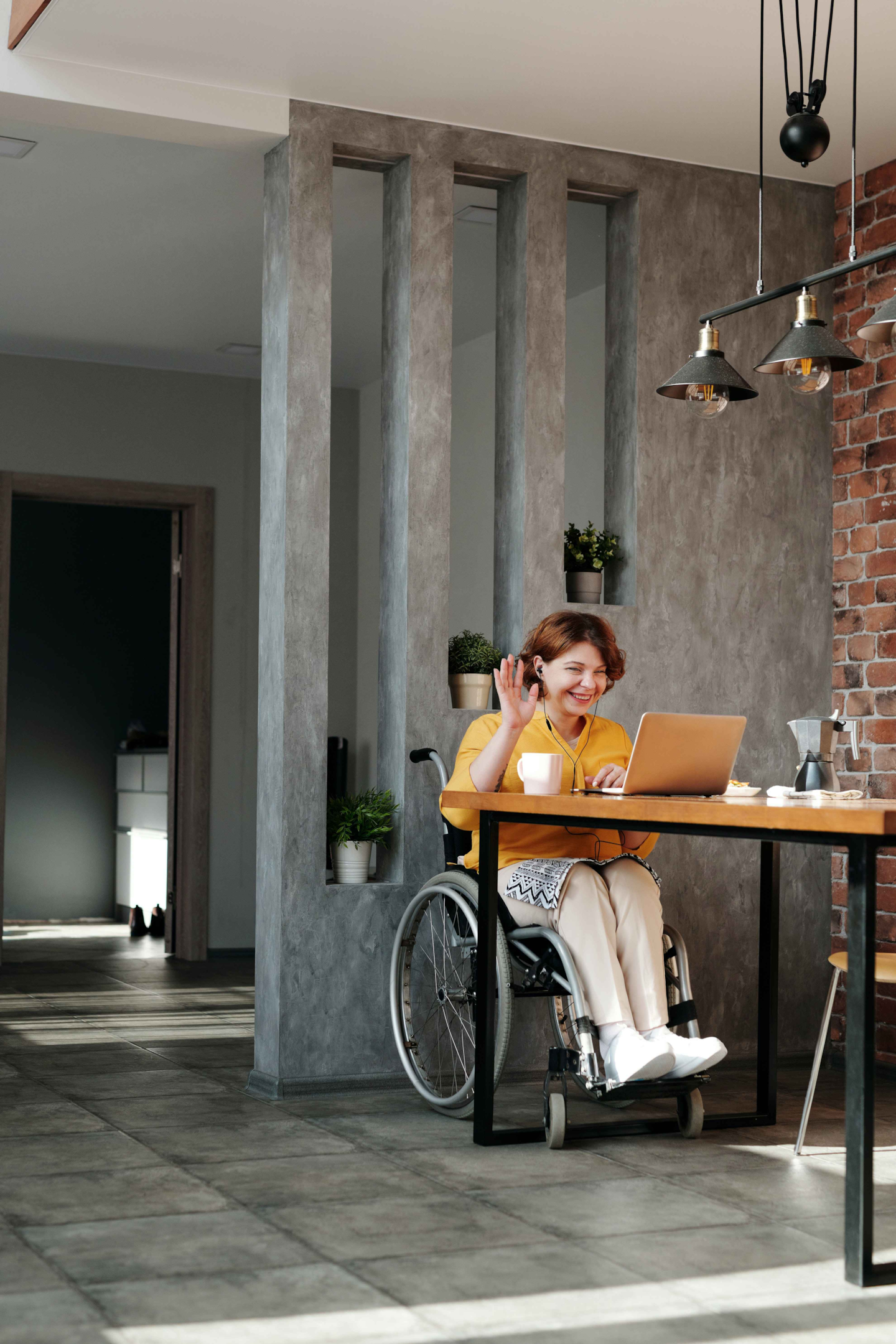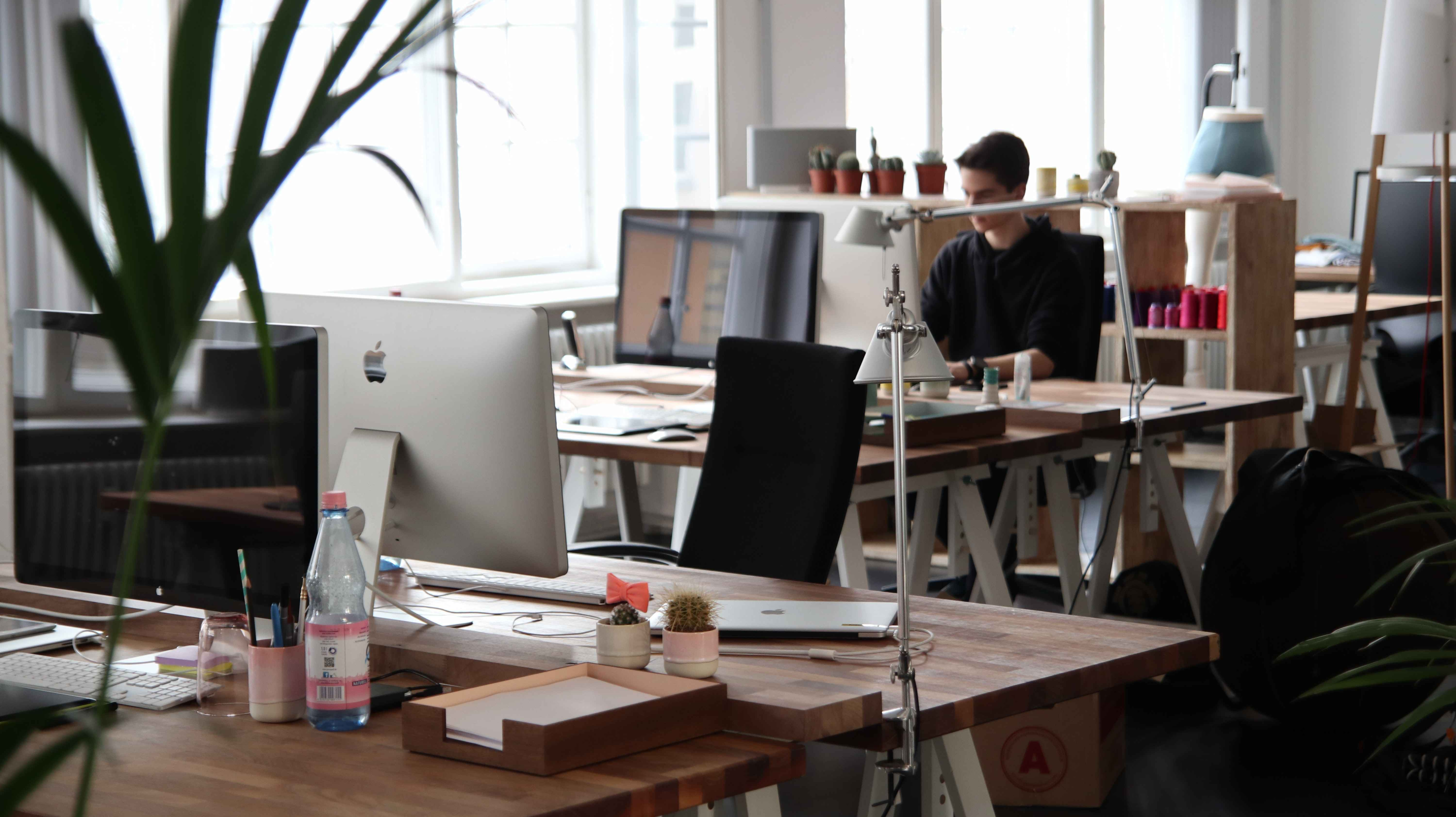The concept of hot desking has been around for many years, but it has become increasingly popular as more and more companies adopt a hybrid model of working following the pandemic. If employees work both from home and from the office, the idea of a permanent desk space allocated to specific individuals makes less sense than an approach where employees have a bank of desks available to sit at when they need one. Additionally, hot desking is often seen as a more inclusive and egalitarian approach to the physical structure of an office.
Many companies are keen to be seen as inclusive and supportive of remote working, so it’s perhaps not surprising that hot desking is having a moment. However, it’s not an approach that works for everyone. In this article, we will cover what hot desking actually means, the pros and cons of the hot desking experience and five quick tips for implementing hot desking.
Table of Contents
What Does Hot Desking Mean?
Hot desking is a method of office design focussing on desk allocation. Instead of sitting at the same desk space each time they are in the office, employees will move around using different workstations depending on what is available. No personal belongings are left on desks overnight, and employees work from laptops, tablets or smartphones rather than fixed desktop computers. Hot desks will normally have an electric socket and an internet connection, and there may be a monitor available.
Although hot desking is the most common term, you may also hear this type of office allocation referred to as desk sharing, free seating or even desk hoteling. A ‘hybrid work space’ usually means that the people working in the office sometimes work there and sometimes from their home or other places, although it can also refer to offices with a mixture of permanent desks and hot desks.
There are also different hot desking models. Within private offices, there may be rota systems to allocate the desks, and employees can be given a specific hot desk for the whole day. In public coworking spaces such as WeWork or Regus, it can be first come, first served in terms of the desks available. Etiquette may also demand that long meetings or confidential calls dictate packing up your things to free up the desk if you aren’t using it for a while.
Most people think of open-plan offices when they think of hot desking, but it can also be used in workplaces that have individual offices. For this article, we’ve focused on how hot desking works in an open-plan environment where there is a large space for many desks and some individual meeting rooms.
Benefits of Hot Desking
As we mentioned earlier, the advantages of hot desking have been widely recognised. Those in favour of hot desking as a system consider it to be:
-
Cost-effective
In a world where many employees regularly work from home, allocating people their own individual desks that then sit empty for half the week is not a good use of office space (or the money paid for that space). By working out how many desks are required over the working week, companies can maximise the use of space in a cost-effective solution. Critically, a company can operate a smaller office than one with the capacity for the total number of employees it has.
-
More Collaborative
When desks are allocated randomly for the day, people from different teams sit next to each other when they aren’t necessarily placed next to each other in a traditional office environment. This physical proximity can help employees get to know each other better, fostering stronger relationships for future work.
-
More Inclusive
When everyone uses different desks, who is in and out of the office is less noticeable. Remote and mobile workers can feel more included and less like outsiders when there is no fixed seating allocation. This creates a sense of belonging which fosters better relations and improves productivity. Companies focussing on diversity, equity and inclusion often choose hot desking arrangements for this reason.

-
Fundamental to a More Equal and Less Hierarchical Culture
Without desks or offices allocated to senior managers, junior employees can find themselves sitting next to a leadership team member. Again, the physical proximity can offer opportunities for communication and discussion between employees of varying levels of seniority that wouldn’t necessarily come up within a typical working day. A less hierarchical structure can diversify the decision-making processes used in a company, leading to more significant innovation.
-
Better for Work-Life Balance
With hot desking, there is no opportunity to personalise your desk with photographs or knick-knacks that have a special connection for you. While this may feel clinical in some ways, there is an argument that the lack of personal connection to a desk can reinforce the separation of professional and home life, making it easier to switch off from work at the end of the day.
-
A Way to Improve Employee Engagement
Considering all these benefits together, we can see that they all have the potential to improve employee engagement. A more inclusive culture, with better team communication and between leaders and employees, leads to better collaboration and innovation. Combine this with a better work-life balance, and you have the essential ingredients for a motivated workforce who feel valued and supported and will do their best work as a result.
Downsides of Hot Desking
While all these benefits of hot desking can make it look like it’s the answer to all your hybrid working issues, in reality implementing a hot desking system can create problems. Companies have found that hot desking:
-
Creates Disruption
When people arrive in the morning, working time can be lost while they find where they will be working for the day. While this issue can be mitigated through desk booking and workplace management software, there can still be issues getting set up when you move from desk to desk. Additionally, for some employees, the lack of consistency regarding where they sit and the fact that their office environment feels impersonal can impact their productivity.
-
Hampers Communication
While advocates of hot desking argue that it improves communication, it can also make it more complicated when you need to talk to someone, and you don’t know where they are sitting. While hot desking might help you talk to more people outside your immediate team, if you aren’t sitting near your teammates and you need to make urgent decisions in person, it can cause problems.
3. Involves More Resources and Policies Than Previously
With employees moving from desk to desk all the time, the need for IT support often increases to ensure everyone has access to what they need to do their job. While the digital world makes this much easier than it used to be, changing connections regularly can lead to IT issues. Introducing desk booking software for remote workers can also take IT resources.
Companies may also need different health and safety policies that must be adequately integrated into working life. For example, employees have to leave the desks they are working at in a tidy and clean state for the next person to use them. Germs are more likely to be passed on when people sit at desks where others have previously sat.
-
Causes Problems if an Employee has Specific Requirements
Whether it is due to a disability or linked to their professional role, many people have specific work requirements which can impact their working life. If you use a wheelchair or software for visual or hearing impairments, it can be impossible to shift desks. Likewise, working with desktop computers for programming or large numbers of paper files for research or legal cases can limit your flexibility regarding where you work.

-
Can Damage Office Culture
While some argue that hot desking helps companies be more inclusive, others counter that it creates a less welcoming atmosphere. People thrive in environments where they feel safe and secure, and the constant shifting around of seating arrangements and lack of personal touches in their working space can lead to employees losing their sense of belonging.
-
Can Be Hard to Implement Successfully in Hierarchical Companies
If hierarchy is important to how your business functions, hot desking can create issues as it can be harder for senior leaders to find the space they need to make the decisions required to run the business. Hierarchy can be a negative word in business structures, but researchers have found that hierarchy can positively affect business. Understanding how your business functions best is key to knowing whether hot desking will work.
5 Steps to Setting Up Hot Desking
Now you have a good idea of the benefits and difficulties of hot desking. If your company wants to try it, here are five quick pointers to follow to ensure it works successfully.
-
Be Prepared to Invest to Make it Work Properly
The investment includes understanding specific requirements, communicating with staff and additional resources such as extra IT and HR support, and even changing workstations if required. You may also need to invest considerable time if employees struggle with the concept of hot desking and need time to work through their concerns.
-
Use Desk Booking Software
For private offices with many employees, implementing a way to book hot desks and meeting rooms is critical to ensuring everyone can get on with their work. There are a variety of software options available to help you with this. Coworking spaces may not need dedicated systems for allocating desks and meeting rooms, but it is still essential to be clear about how people can get the desk space they need.
-
Have a Trial, Get Feedback and Respond to it
However thoroughly you prepare before introducing a new model like hot desking, unexpected issues may arise. By having a trial, you can hopefully iron out teething problems. Asking for feedback and responding to it ensures employees feel valued and supported. However, it can also take a few months for employees to get used to hot desking, so make sure you set expectations for how, when and what you will review.

-
Set the Ground Rules
Hot desking requires a level of collaboration between employees that having a dedicated desk does not. There needs to be clear guidance regarding how to find your desk, set up your working space for the day and leave it clean and tidy. Nothing should be left exposed on the workstation and you may need to remind employees about how to look after highly sensitive or confidential information.
-
Think About Your Office Culture and Organisational Structure
Moving to a hot desking system can change how people interact and work together. Understanding your culture and structure and any changes you want to make is essential as you introduce hot desking. For example, if you aim to create a more inclusive culture with hot desking, you may also want to add touch points in the week where people can come together and get to know each other better.








